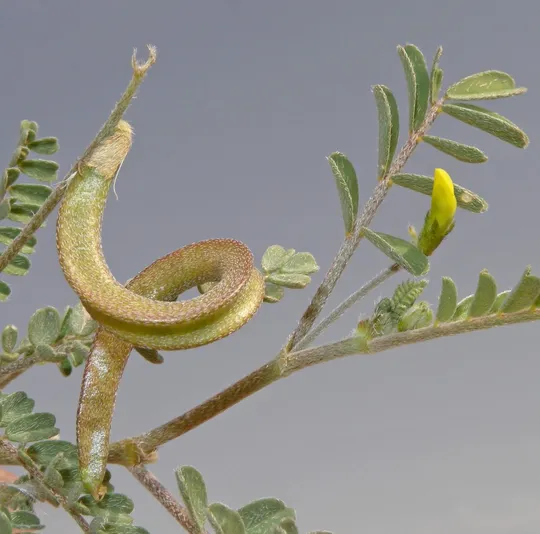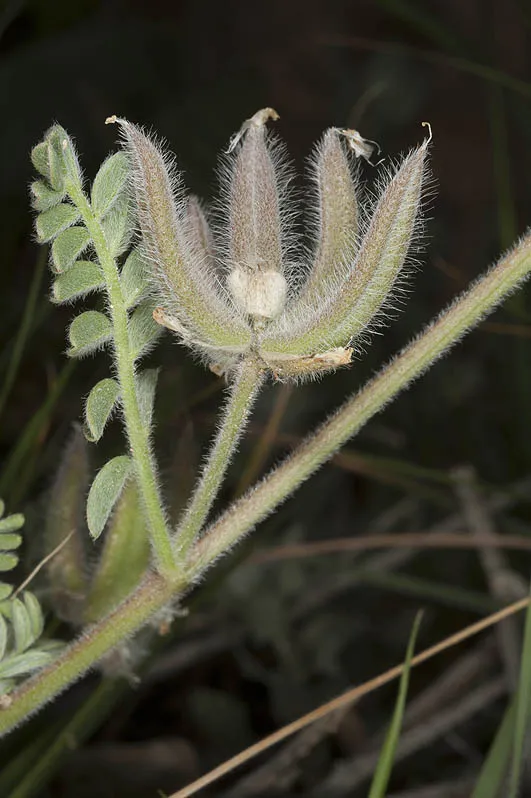Astragalus cretaceus
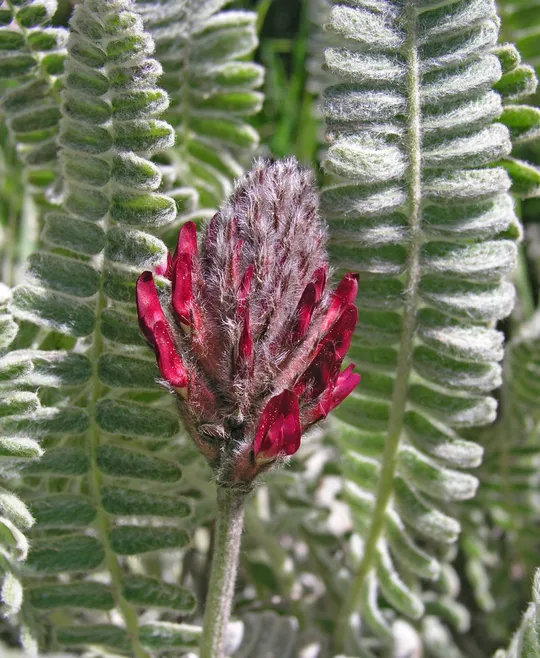
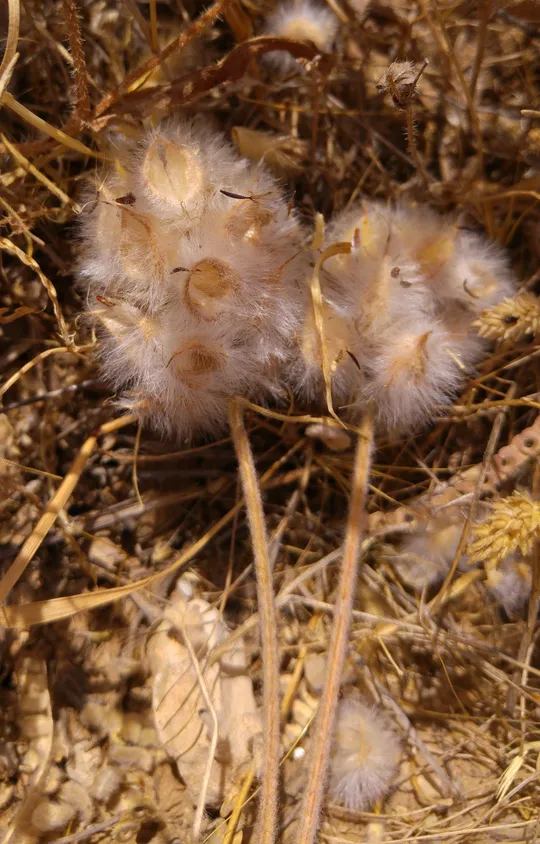
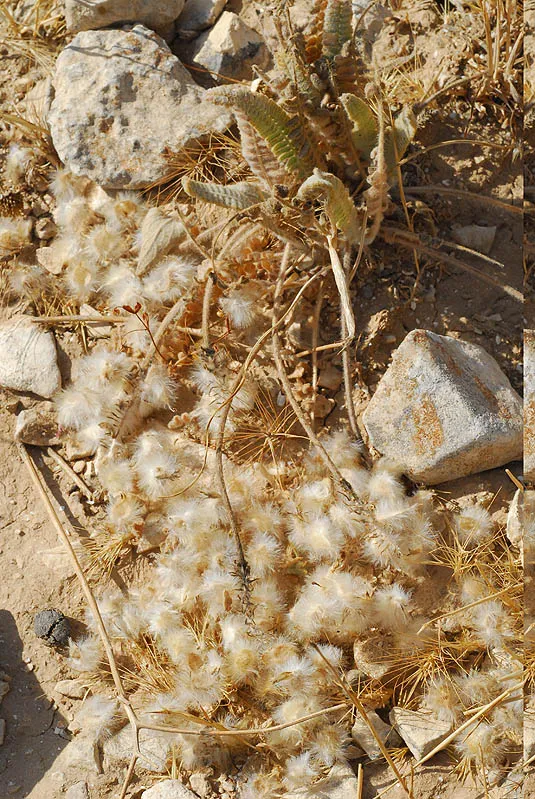
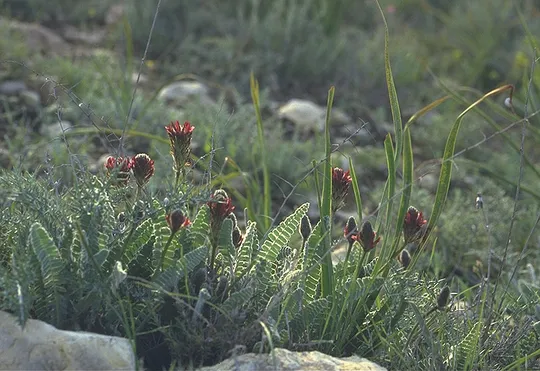
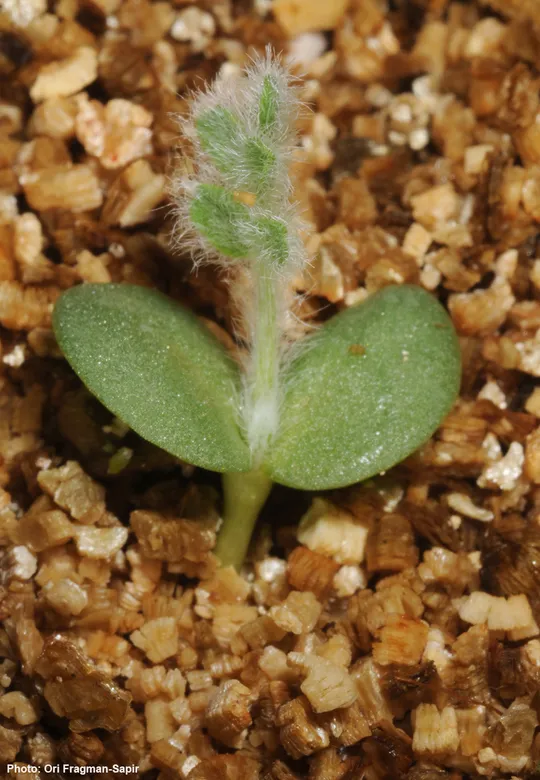
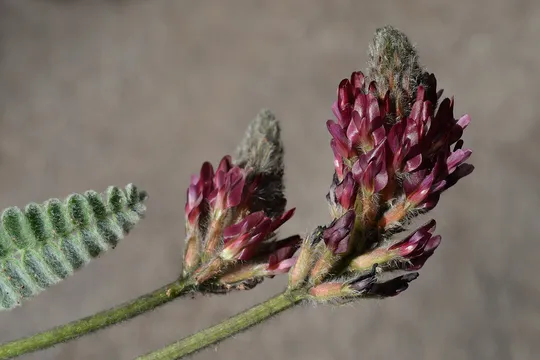
Astragalus cretaceous grows in three
regions – the Judean Mountains, Judean Desert and the northern Negev, on 27
documented sites, but there are estimates that there are about 45 sites. In the
Judean Mountains, it grows mainly in the southern part of the region from Mount
Amasa and Mount Hiran to Ma’on and the Hebron area. In the Judean Desert, it
appears in the Tko'a area. Most of the sites are found in the Northern Negev –
from the area of Wadi Btarim and the Be’er Sheva hills through the Goral Hills
to Lahav and Lehavim. Interestingly A. cretaceous
does not grow in the Judean and Samarian transition zone north of the Bethlehem
area.
Sunny transition zone scrubland together with Noaea
mucronata and Phlomis brachyodon on limestone slopes.
For the characteristics of the genus Astragalus –
see A. trimestris. For the
global and local distribution of Astragalus – see A. oocephalus.
A.
cretaceous belongs to the section Dasyphyllium. This section
has fern-like leaves and flowers concentrated in beautiful spherical wine-red inflorescences.
The plants have no stem and possess a dense rosette, close to the ground, with
stemless inflorescences borne on long pedicels. The plants are covered in gray hairs
composed of simple and split hairs. The hairy pod tapers gradually to a point,
has a small number of seeds and is usually shorter than 25 mm. The fruit
capitulum has many small pods. This is, incidentally, a good example of resource
tradeoff between fruit size and number of seeds to the number of fruits: few many-seeded
fruits vs. many fruits with few seeds.
The species in the section grow in the Fertile Crescent transition
zone in the Middle East. A. emarginatus,
which belongs to this group, grows on the Mount Hermon heights and in the tragacanth
zone of the Lebanese and Turkish mountains. It differs from A. cretaceus in its larger leaflets
and long peduncle (over 20 cm. while those
of A. cretaceus
are only 15 cm) which are much taller than the leaves. A. fresenii from the Southern Sinai Mountains also
belongs to this group. This is an endemic species that has probably survived
from a colder period in which the tragacanth plants spread southwards to Sinai.
··
According to the
observations and collections, the number of Astragalus
cretaceous regions and sites is stable, but some of the
populations face future threats that may lead to a decrease in the number of
sites (see below threat sources and factors).
·
The main factors
threatening A. cretaceous populations and
causing local extinctions are KKL-JNF forestry operations in the northern Negev
and southern Judean Mountains, and the conversion of land in the southern
Judean hills and the Judean Desert to agriculture.
·
Some sites in the
southern Judean Mountains are located in the the Ma'on Ridge and Tel Krayot nature
reserves. The northern Negev sites north of Be’er Sheva and in the Lahav-Lehavim
area are not in a nature reserves.
·
A. cretaceous is not in the red plant lists of other countries.
Additional areas on which transition zone vegetation
grows in the Goral Hills and Lahav areas should be included in declared nature
reserves. Several Astragalus cretaceous populations should
be monitored in every region to study the long-term change trends and to
understand the impact of afforestation on them. If necessary, sunny clearings,
where A. cretaceous grows should be maintained in
planted forests. KKL-JNF staff should be informed about concentrations of A.
cretaceous and other red species in forests under their
management and conservation possibilities should be discussed with them.
Efforts should be made to use A. cretaceous for public landscaping in transition zones.
Astragalus cretaceous is a plant of
the transition zones and semi-desert areas in the Fertile Crescent in Israel,
Jordan, Syria, Turkey and northern Iraq. It grows in all the regions of Jordan
and continues northwards to Syria, Turkey and northern Iran.
Astragalus cretaceous is an herbaceous
perennial plant with beautiful red inflorescences characteristic of the transition
zones in the northern Negev, in the southern Judean Mountains and in the Judean
Desert. The species is very rare and its
population may be vulnerable to afforestation and conversion of land to
agriculture.
Current Occupancy Map
| 1000 squre meter pixel | 5000 squre meter pixel | 10000 squre meter pixel | |
|---|---|---|---|
| number of observations | 0 | 0 | 0 |
| in total pixels | 0 | 0 | 0 |
| Family | Fabaceae |
| Classification | On the endangered species list |
| Ecosystem | Semi-Steppe Belt |
| Chorotype | Western Irano-Turanian |
| Conservation Site | Tel Krayot Nature Reserve, Lahav Area |
| Rarity |
1
1
6
|
|---|---|
| Vulnerability |
0
2
4
|
| Attractiveness |
0
2
4
|
| Endemism |
0
0
4
|
| Red number |
1
3.2
10
|
| Peripherality | E |
| IUCN category | DD EW EX LC CR EN VU NT |
| Threat Definition according to the red book | Vulnerable |
 Based on:
Based on:

